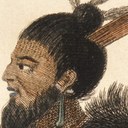0197 "The native inhabitants, although cannibals, were a fine and warlike race" – On the Popular Image of New Zealand in Nineteenth-Century Europe
Identifiers (Article)
Identifiers (Files)
Abstract
The New Zealand to be discovered in the popular media of nineteenth-century Europe is surprising: foremost because it is scarcely present. Other British colonies like those in North America and Australia were much-loved subjects for popular exotic pictorial inventions, for example in illustrations to Karl May novels, product advertising, posters for world exhibitions and the so-called ethnological expositions, or successful journals like Die Gartenlaube in Germany. Images of the islands and their inhabitants are noticeable by their absence in product advertising in Europe. Likewise Maori appear to have not featured at the ethnological expositions, though they do appear considerably in scientific and scholarly publications.
Hence, the essay makes the case that in this context high and popular culture are frequently not clearly distinct from one another in the nineteenth century: the scientific and scholarly literature served an extremely broad circle of interested persons in a bourgeoisie hungry for knowledge. The oil paintings of the academic Gottfried Lindauer, for example, were shown at the Colonial and Indian Exhibition of 1886 in London side by side with ethnographic artefacts and a recreated Māori habitat in the New Zealand Court. Thus, the overall image of the islands conveyed in the Exhibition matched the contemporary taste of indulging in excessive impressions at such expositions. Textual descriptions and interpretations of what was seen also heavily featured in the press, while a few successful novels painted a picture of the typical ‘New Zealander’.
The picture Europe had got of the British colony New Zealand in the nineteenth century was richly faceted, albeit not particularly differentiated. The essay aims to describe these various facets and, moreover, identify how they depended on their popularity in the different media.
Statistics


License

This work is licensed under a Creative Commons Attribution-NonCommercial-NoDerivatives 4.0 International License.



